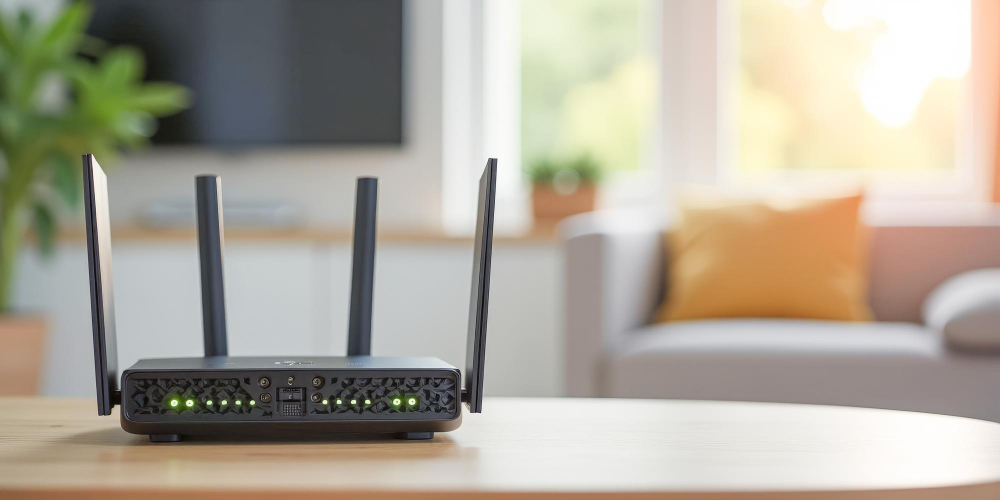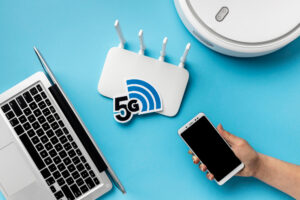A fast and reliable Wi-Fi connection is essential for work, streaming, gaming, and staying connected. However, Wi-Fi interference can cause frustrating slowdowns and connection drops. This guide will explore the causes of Wi-Fi interference and provide quick, practical solutions to restore your connection’s speed and stability.
What Is Wi-Fi Interference?
Wi-Fi interference occurs when your wireless signal is disrupted by other devices, networks, or physical obstructions. This interference weakens the signal, reducing speed, increasing latency, and causing connection instability.
Common Causes of Wi-Fi Interference
1. Neighboring Wi-Fi Networks
In densely populated areas, overlapping Wi-Fi signals from neighbors can lead to congestion, especially on commonly used channels.
2. Physical Obstacles
Walls, furniture, and appliances can obstruct the Wi-Fi signal, reducing coverage and speed. Concrete, brick, and metal are particularly problematic materials.
3. Electronic Devices
Household devices such as microwaves, baby monitors, and cordless phones operate on frequencies that can interfere with Wi-Fi.
4. Outdated Equipment
Older routers or devices using outdated Wi-Fi standards may struggle to handle modern network demands, contributing to interference.
5. Incorrect Router Placement
Positioning your router in a corner or near obstructions can limit its signal range and strength.
Quick Solutions to Fix Wi-Fi Interference
1. Change the Wi-Fi Channel
Most routers default to the same channels, causing congestion. Switch to a less crowded channel:
- Access your router’s admin panel (typically via
192.168.0.1or192.168.1.1). - Navigate to the wireless settings section.
- Select a different channel, such as 1, 6, or 11 for 2.4 GHz networks.
2. Switch to 5 GHz Frequency
The 5 GHz band offers more channels and experiences less interference than 2.4 GHz. If your router supports dual-band, switch to 5 GHz:
- Access the router’s admin panel.
- Enable 5 GHz and connect compatible devices to it.
3. Optimize Router Placement
Place your router:
- In a central location for even coverage.
- Away from thick walls, appliances, and metal objects.
- On an elevated surface, such as a shelf or desk.
4. Reduce Interference from Other Devices
Keep your router away from:
- Microwaves, which emit interference when in use.
- Cordless phones and baby monitors operating on the 2.4 GHz frequency.
5. Use a Wi-Fi Analyzer Tool
Wi-Fi analyzer apps help identify crowded channels and signal strength in different areas of your home. Apps like NetSpot, Wi-Fi Analyzer, and inSSIDer are great options.
6. Upgrade Your Router
If your router is over five years old, it might not support current Wi-Fi standards. Upgrading to a router with Wi-Fi 6 can significantly improve performance and reduce interference.
7. Extend Your Network with a Mesh System
For large homes or areas with Wi-Fi dead zones, a mesh Wi-Fi system provides consistent and reliable coverage. Systems like Google Nest Wi-Fi or Eero are effective options.
8. Secure Your Network
Unauthorized devices can strain your network. Secure your Wi-Fi with:
- A strong, unique password.
- WPA3 encryption for enhanced security.
9. Update Router Firmware
Router manufacturers often release firmware updates to improve performance and fix bugs. Check your router’s admin panel for updates.
10. Use Ethernet for High-Demand Devices
For activities like gaming or 4K streaming, consider connecting devices directly to the router using an Ethernet cable. This bypasses Wi-Fi interference entirely.
Long-Term Solutions to Prevent Wi-Fi Interference
1. Invest in a Wi-Fi 6 Router
Wi-Fi 6 routers are designed to handle multiple devices and reduce interference in crowded environments.
2. Use Quality of Service (QoS) Settings
QoS allows you to prioritize bandwidth for specific devices or applications, ensuring critical tasks get the best performance.
3. Add a Wi-Fi Extender
Wi-Fi extenders amplify the signal to cover areas with weak or no connectivity.
4. Opt for Wired Backhaul in Mesh Systems
For mesh networks, using Ethernet cables to connect nodes improves overall system performance by reducing reliance on wireless signals.
How to Diagnose Wi-Fi Interference
Step 1: Test Your Connection
- Use speed-testing tools like Ookla Speedtest to measure your internet speed.
- Compare speeds in different rooms to identify weak spots.
Step 2: Check for Network Congestion
- Use a Wi-Fi analyzer to see which channels are most congested.
Step 3: Monitor Device Usage
- Disconnect unused devices to see if performance improves.
When to Contact Your ISP
If you’ve tried all the above solutions and still face interference issues, your ISP may need to address external factors affecting your network. They can also provide guidance on upgrading to a faster plan if necessary.
Final Thoughts
Fixing Wi-Fi interference is often a matter of identifying the source of the problem and applying the right solutions. Whether it’s changing channels, upgrading equipment, or optimizing placement, addressing interference can lead to faster, more reliable internet for your home. By taking proactive steps, you can enjoy seamless connectivity for all your online activities.







